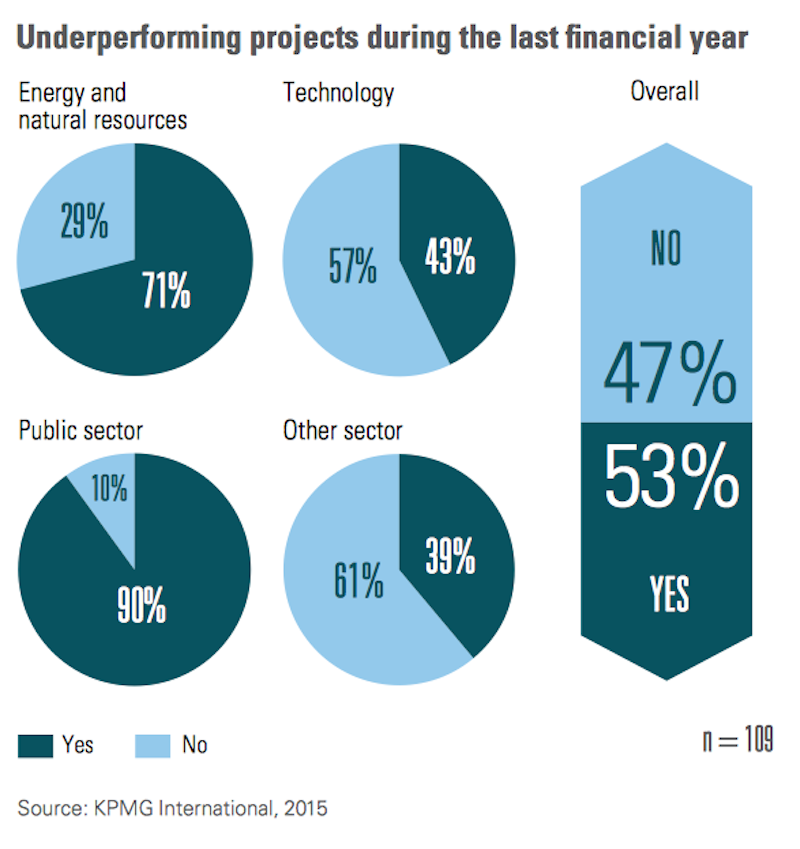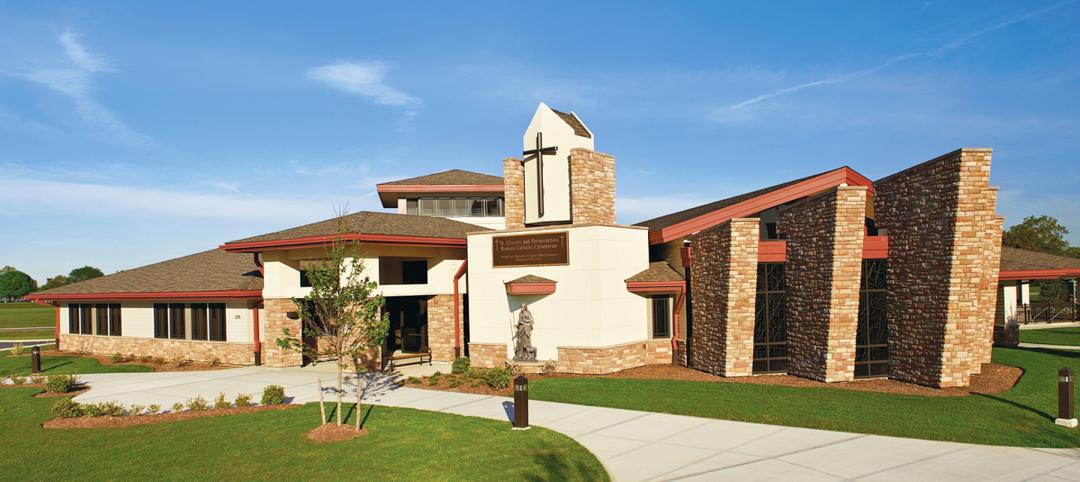Despite their planning and risk management efforts, owners are still finding that a sizable percentage of their projects are either failing or aren’t coming in anywhere near on time or on budget.
More than half—53%—of owners say they suffered one or more underperforming projects in the previous year, a number that rises to 61% for larger organizations, according to KPMG International’s ninth annual Global Construction Survey 2015, based on interviews with 109 senior leaders from private and public organizations around the world that conduct construction activity.
Only 31% of respondents’ projects over the past three years came in within 10% of their budgeted cost. And only one quarter of projects over that period came in within 10% of their original deadlines.
The owners imply that these failures, delays, and overruns are less the result of poor project oversight than of talent shortages and the lack of integration of project management information systems into these companies’ accounting and procurement software programs.

Most owners polled assert that their companies use formal screening, prioritizing, and approval processes for projects, including financial and risk analysis (84%). More than 80% of respondents state that the majority of their capital projects are planned. Thirty percent of respondents use a design-bid-build project delivery strategy, while 32% use engineer-procure-construct.
“All potential projects should be systematically identified, classified, screened, prioritized, evaluated and selected,” writes Jeff Shaw, Director-KPMG in South Africa. “This process must be supported by an appropriate budget allocation and monitoring process. Throughout the capital allocation process, alignment between strategic objectives and the capital project portfolio must be tested.”
The report notes, however, that owners are challenged finding qualified project management personnel. Forty-five percent of respondents say they struggle to attract qualified craft labor, planners and project management professionals.
While 64% of respondents believe their management controls are either “optimized” or “monitored,” nearly one-third concede that their controls are “standardized,” with no testing or reporting or reporting to management and only limited staff training.
Most construction companies rely heavily on software to manage projects. Fifty-five percent of respondents say they are “satisfied” or “mostly satisfied” about the return on investment from project management tools and training. And 73% say they are confident about the accuracy and timeliness of reports they receive from managers and contractors.
However, only about half of respondents say their organizations have introduced an integrated project management information system (PMIS). Consequently, less than one-fifth of respondents could answer “yes” definitively when asked if investments in project governance and controls have reduced project costs.
In planning for delays and cost overruns, senior executives polled identify a range of methods to calculate contingency levels. The two most popular are setting aside an specific amount of contingency for all projects (e.g., 10%), and quantitative risk analysis. “The relative sophistication of the latter suggests that owners are trying to become more accurate in their forecasting,” the report states.
Sixty-nine percent of owners polled say that “poor contractor performance” is one of the biggest reasons for failing projects, delays, or cost overruns. And there’s definitely something negative going when only one-third could say they have a “high” level of trust with pros.
More than eight in 10 respondents expect greater collaboration with contractors over the next five years. How much these relationships actually change, though, remains to be seen. The report suggests that lump-sum, fixed-price contracts, which dominate among the survey’s respondents, are one reason for the fragile state of owner-contractor relationships, primarily because they defer risk onto the contractor. And owners believe the balance of power is shifting toward them; nearly half expect to have more negotiating strength when delivering capital projects over the next five years.
KPMG International offers five steps for owners to improve the performance of their projects:
- Take a fresh approach to talent management through more effective recruitment, development, and retention strategies;
- Execute a fully integrated PMIS for swift coordination and real-time reporting;
- Demand practical targets from contractors based on realistic expectations of what can go wrong;
- Use contingency planning to control costs rather than excuse overruns; and
- Invest in relationships with contractors by creating integrated project teams.

Related Stories
| Oct 4, 2011
GREENBUILD 2011: Mythic Paint launches two new paint products
A high performance paint, and a combination paint and primer now available.
| Oct 3, 2011
Magellan Development Group opens Village Market in Chicago’s Lakeshore East neighborhood
Magellan Development Group and Hanwha Engineering & Construction are joint-venture development partners on the project. The Village Market was designed for Silver LEED certification by Loewenberg Architects and built by McHugh Construction.
| Sep 30, 2011
BBS Architects & Engineers completes welcoming center at St. Charles Resurrection Cemetery
The new structure serves as the cemetery's focal architectural point and center of operations.
| Sep 29, 2011
Submit your Great Solutions
Profiles of Great Solutions will appear in December 2011 issue of Building Design+Construction.
| Sep 29, 2011
Busch Engineering, Science and Technology Residence Hall opens to Rutgers students
With a total development cost of $57 million, B.E.S.T. is the first on-campus residence hall constructed by Rutgers since 1994.
| Sep 29, 2011
Kohler supports 2011 Solar Decathlon competition teams
Modular Architecture > In a quest to create the ultimate ‘green’ house, 20 collegiate teams compete in Washington D.C. Mall.
| Sep 29, 2011
AIA Dallas names new executive director
AIA Dallas one of only a few chapters in the U.S. to be led by an accomplished architect.
| Sep 29, 2011
Potter honored with SMSP honor
The Society for Marketing Professional Services (SMPS) recognized Alfred K. Potter II, FSMPS, senior vice president with Gilbane Building Co., with the 2011 Weld Coxe Marketing Achievement Award (MAA).













